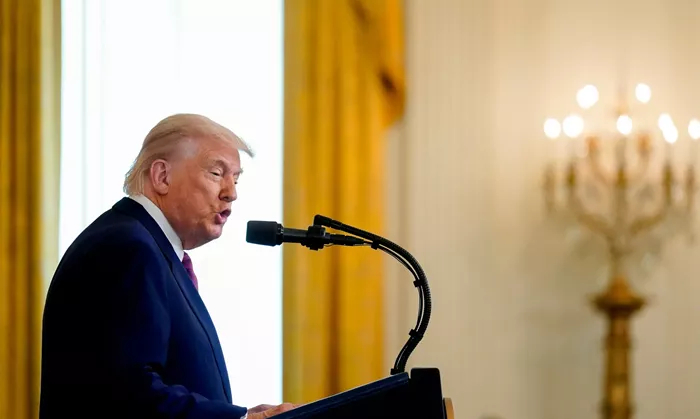President Donald Trump has announced that he will soon name his pick for the next Federal Reserve chair, sparking new concerns about his approach to the central bank. Speaking to reporters last Friday, Trump said he already has a “pretty good idea” of who he will choose, but did not reveal any names.
Many expect Trump’s nominee to push for lower interest rates, a stance he has advocated for repeatedly. However, experts warn that announcing a nominee this summer—well before current Fed Chair Jerome Powell’s term ends in May 2026—could unsettle both the economy and financial markets.
Tom Essaye, president of Sevens Report Research, said in a note that such a move would be “high-risk” for the administration. He warned that undermining the Fed’s independence could hurt key assets like the U.S. dollar and Treasury bonds.
Announcing a Fed pick this early would break with recent tradition. Previous presidents have named their choices just a few months before the new term begins. Trump’s comments have also revived memories of his Treasury secretary’s proposal last year to select a “shadow Fed chair” far ahead of Powell’s term expiring. That plan was later dropped, but the idea is now back in discussion among analysts and investors.
Some experts believe Trump is unlikely to announce his pick this summer. If he does, markets could react positively at first, with stocks rising and Treasury yields falling. But over time, the move could damage confidence in U.S. financial assets.
Michael Strain, an economist at the American Enterprise Institute, said that naming a “shadow Fed chair” could create the impression that Trump wants to speed up Powell’s departure. He added that if Trump’s nominee starts making public statements, it could influence market and inflation expectations.
Strain also noted that Trump’s past actions—such as threatening to fire Powell—have likely kept interest rates higher and hurt the U.S. economy. He stressed that any new Fed chair must prove their independence to the markets, which will closely watch their statements and actions.
Recent history shows that Fed chairs are usually announced three to five months before their terms start. Analysts at Evercore ISI, led by Krishna Guha, argue that naming a new chair now would confuse markets and make it harder for the Fed to guide interest rate expectations.
Essaye said that if the new chair is seen as independent but willing to cut rates, markets could rally. However, if the Fed is viewed as losing its independence, it could harm the central bank’s reputation and reduce the global appeal of U.S. assets.
Trump has continued to pressure Powell’s Fed to lower interest rates, recently calling for a full percentage point cut after new inflation and jobs data. In April, Trump said Powell’s “termination cannot come fast enough,” but later softened his stance, saying he had no plans to fire him.
Sarah Binder, a Brookings Institution fellow, pointed out that while the Fed is supposed to be independent, presidents often pick chairs who align with their economic goals. She said that markets can react negatively if a new chair is too eager to cut rates, regardless of economic conditions.
Several names are being discussed as possible nominees. Former Fed governor Kevin Warsh is seen as a front-runner, with Treasury Secretary Scott Bessent and Fed Governor Christopher Waller also mentioned. However, formal interviews have not started, and the White House has denied some reports about candidates.
Stephen Moore, a Trump adviser, suggested that Trump may choose from Warsh, Kevin Hassett, Art Laffer, or Larry Kudlow, all known for favoring stable inflation and a strong dollar.
In summary, Trump’s plan to announce a new Fed chair well before Powell’s term ends could have immediate effects on markets but may also create long-term risks for the Fed’s independence and the U.S. economy.
Read more:


